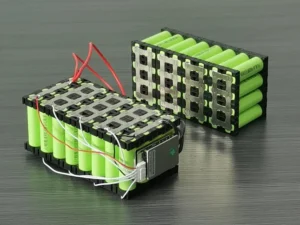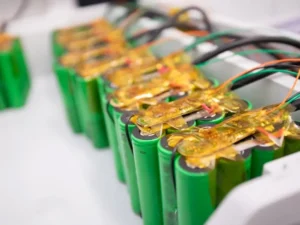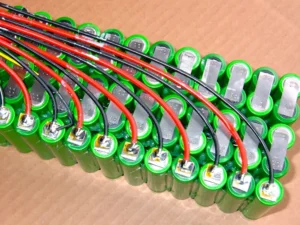Introduction:
Are you facing issues with your lithium-ion battery packs? Lithium batteries are everywhere, whether it’s your smartphone, laptop, or power tool battery. Thus, you must understand how to fix Li-ion battery packs. Knowing the right hacks can save both your time and money. In this article, we will guide you through everything. We will explore the process of repairing lithium batteries step by step. Here’s a guide if you are wondering how to repair lithium ion battery packs.
Understanding Lithium-Ion Battery Packs

Before we understand how to repair the batteries, let’s learn the actual meaning. Lithium-ion battery packs are also known as Li-ion battery packs. They are used in electronic devices, such as smartphones and laptops. They are rechargeable in nature and thus are clean power sources. Lithium-ion cells are green and contribute to the planet’s all-round well-being. These battery packs consist of many lithium-ion cells connected in series or parallel. The set design helps in achieving the desired voltage and capacity. There are many reasons why users prefer lithium-ion batteries over normal batteries. The first one is their high energy density and long lifespan. The features overcome the limitations, such as longevity and durability. Lithium-ion provides a reliable power source for various applications. Like all batteries, they can degrade over time. Thus leading to decreased performance and capacity.
Advantages of lithium-ion battery packs
Wondering about the advantages of lithium-ion battery packs? Well, there are many advantages to lithium-ion battery packs. Here, these batteries offer many advantages over traditional battery chemistries,
High Energy Density
Lithium-ion batteries have a high energy density. Thus, they can store much energy in a compact and lightweight package. Thus, lithium-ion battery packs are more space-efficient than other batteries. This makes them ideal for mobile electronic devices. In mobile devices, pace and weight are vital factors.
Rechargeability
Unlike disposable batteries, Li ion battery packs are rechargeable. Thus, any manufacturer can reuse lithium-ion batteries many times. This feature makes them cheaper and greener compared to single-use batteries.
Long Lifespan
Lithium-ion battery packs have a longer life. Thus, they last longer compared to other types of rechargeable batteries. If you handle and care for these batteries, worry less. With proper maintenance, they can last for several years before needing replacement.

Low Self-Discharge Rate
Lithium-ion batteries have a low self-discharge rate. In simple words, lithium-ion batteries can keep their charge for extended periods. Hence, when not in use, the batteries will discharge more. This makes them suitable for devices sitting idle for some time between uses.
Fast Charging
Not only the discharge rates, lithium-ion battery packs also charge faster. Compared to other types of traditional rechargeable batteries, these batteries charge quicker. This feature allows for shorter charging times. Hence, it enhances the ease of using electronic devices.
Common Issues with Lithium-Ion Battery Packs
Before exploring the repair process, let’s identify some common issues. If you have a lithium-ion battery pack, you may face:
Capacity Degradation
Over time, lithium-ion battery packs may lose their ability to hold a charge. Thus, it often results in reduced runtime for your devices.
Cell Imbalance
In multi-cell battery packs, individual cells may become unbalanced. Credit goes to differences in capacity or age. Cell imbalance often results in uneven discharge. It also reduces the performance of the battery pack.
Overheating
Excessive heat can damage lithium-ion battery packs. It causes them to lose capacity and become unstable. Overheating may occur during charging, discharging, or due to environmental factors.
How to repair lithium ion battery packs?
Now that you have identified the common issues, a solution is more straightforward. Let’s discuss how to repair lithium-ion battery packs.

Step 1: Safety First
Safety should always be your top priority when working with lithium-ion battery packs. Before attempting any repairs, ensure the following steps:
- Wear protective physical gear, gloves, and safety goggles to prevent injuries.
- Work in a well-ventilated area. And avoid exposure to toxic chemicals and fumes.
- Keep a fire extinguisher nearby in case of emergencies.
Step 2: Disassembly
Now, disassemble the battery pack. For this purpose, you can always use the appropriate tools, such as screwdrivers and pry tools. Take note of the battery’s configuration. Later, position each component for reassembly. Be mindful of any connectors or wiring that may be present inside the battery pack.
Step 3: Cell Testing
Using a multimeter, test each cell within the battery pack. It will help you to identify any faulty or underperforming cells. Check the voltage and internal resistance of every cell to determine its health. Replace any defective cells with new ones. But ensure the same type and capacity to ensure the proper functioning of the battery pack.
Step 4: Cell Balancing
Cell balancing can be an issue if you’re dealing with a multi-cell battery pack. It’s essential to ensure that the cells are balanced. It prevents overcharging or discharging. Use a battery balancer or charger with balancing capabilities. It will help you to equalize the voltage across all cells. Thus, it extends the life of the battery pack and ensures consistent performance.
Step 5: Thermal Management
For lithium-ion batteries, thermal management while operating is a tough task. Install thermal management solutions to regulate the temperature of the battery pack. Excessive heat can further speed up the degradation of lithium-ion battery packs. Further, it may also pose a safety risk. Thus, consider adding heat sinks, thermal pads, or cooling fans. Such instruments will dissipate heat and maintain optimal temperature levels.
Step 6: Reassembly
Now, reassemble the battery pack. Ensure that all components are aligned and secured. Follow the notes or markings made during disassembly. It will ensure the correct placement of each component. Double-check the wiring and connections to avoid any shorts or electrical issues. It also improves the performance of the battery pack.
Step 7: Testing
After reassembly, it’s crucial to test the repaired Li-ion battery pack. The rearrangement ensures that it functions. Charge the battery pack. Afterward, discharge it under load to simulate real-world usage. Track its performance and capacity over time. It will help you to detect any further issues and make adjustments as necessary.
Conclusion:
Now you know how to repair lithium-ion battery packs. Repairing lithium-ion battery packs may seem daunting. But with the right knowledge and tools, it is achievable. By following the above steps and prioritizing safety, you are all set. You can repair your lithium-ion batteries. It extends the lifespan of your electronic devices and saves money on replacements. Always handle Li-ion battery packs with care. Further, you can seek professional help if you’re unsure. Take care of every critical aspect of the repair process. Happy repairing!
